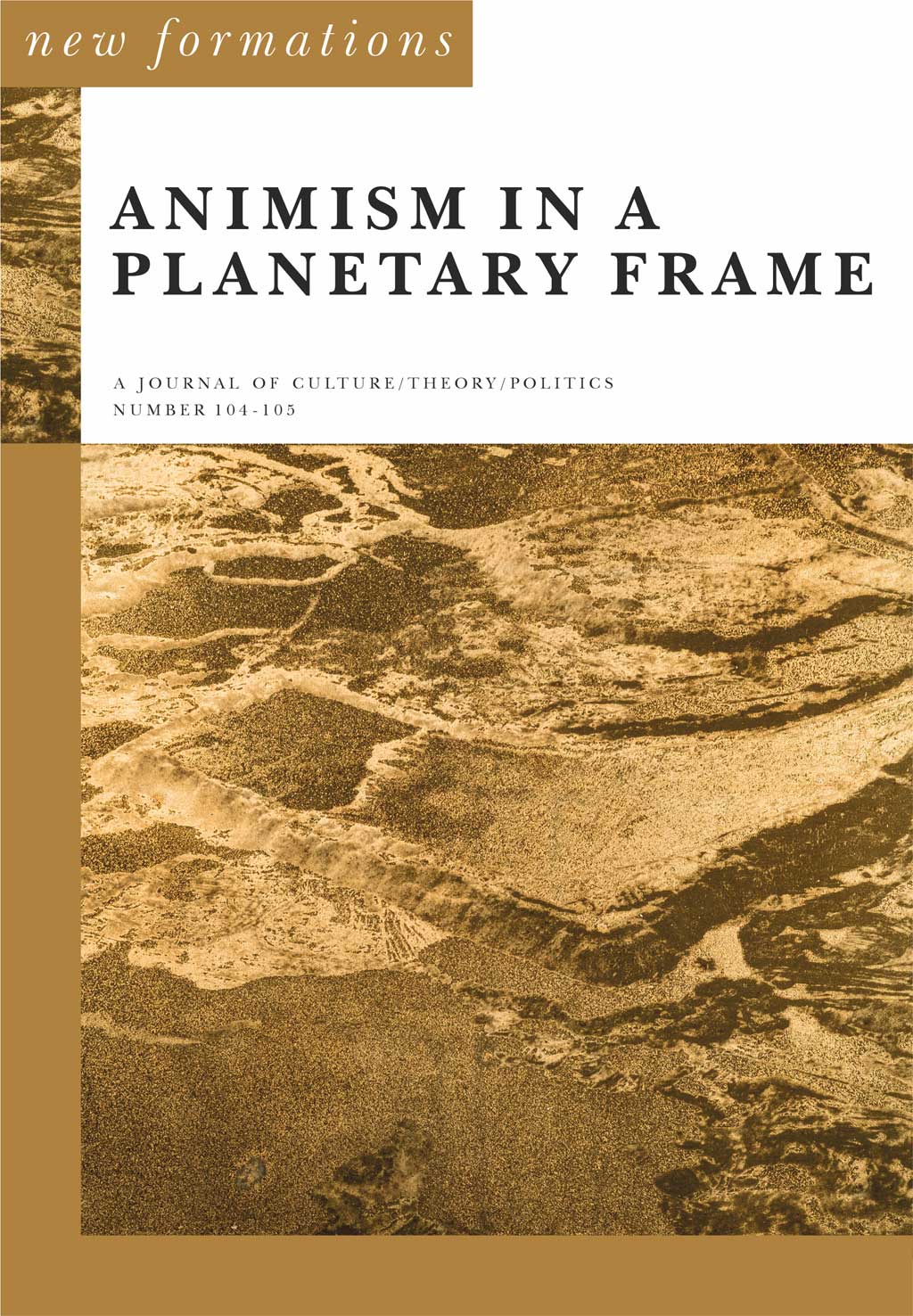
Critical Spirits: New Animism as Historical Materialism
New Formations - Print ISSN 0950-2378 - Online ISSN 1741-0789
Volume 2021 Number 104 & 105
Critical Spirits: New Animism as Historical Materialism
Sam Durrant pages 50‑76
DOI: 10.3898/NewF:104-105.03.2021
Abstract
This essay reads the so-called ’new animism’ alongside the historical materialism of Benjamin, Horkheimer and Adorno. The aim is to draw out the political dimensions of the former and the ecological dimensions of the latter. New animism shares with historical materialism a critique of modernity and the alienation produced by the separation of the human sphere of culture from the nonhuman field of nature. Both theories are interested in animism as exemplary refusals of this separation and both seek a mimetic, non-objectifying, relation to the world. New animism operates to correct historical materialism’s Eurocentric tendency to think of such ‘naturecultures’ as premodern and thus superceded, showing what can still be learnt from the example of specific indigenous peoples and their animistic engagement with the more than human world. But historical materialism’s dialectical approach to history also helps to guard against the romanticisation of animism and dehistoricised models of animistic relations to ‘nature’. Capitalist modernity is not simply the extirpation of animism, the turning of souls into things, but also itself a modified form of animism, the turning of things into magical commodities. Once we understand the mythic nature of capitalism, the critical task becomes not to reanimate the world but to counter-animate it. Both new animism and historical materialism are utopian in their investment in a spirited, more than human world, but the latter also seeks to promote what I call a critical spiritedness, an ironised, melancholic identification with our fellow beings, both human and nonhuman, as subject to history and thus, in Adorno’s phrasing, ‘damaged life’. In the final part of my essay, I consider the way in which art can channel this critical spirit through an exploration of Jim Jarmusch’s 1995 film Dead Man, and its counter-animation of the cinematic tradition of the Western. The film is at once a melancholic critique of the deanimating, ecocidal and genocidal consequences of Western expansion and an attempt to respiritualise the cinematic gaze through a creaturely identification with damaged life.
SORRY - you are not registered as being permitted online access to the full text of this article
You have the following options:
- If you are viewing this via an institution or academic library you can ask that your institution takes out a Subscription to this journal.
- If you already have a Personal Subscription please login below
Forgotten your username / password? Click here to locate
- Purchase an annual Personal Subscription
PRINT + DIGITAL personal subscription (£45 / year)
DIGITAL personal subscription (£30 / year)
A Personal Subscription provides immediate access not only to the single article you are seeking, but also to all past and future articles in this journal up to the expiry of your annual (calendar year) subscription. - Purchase immediate access to this single article (UK£7.00) - Buy article Coming Soon
To cite this article
Sam Durrant (2021) Critical Spirits: New Animism as Historical Materialism, New Formations, 2021(104 & 105 ), 50-76 . https://doi.org/10.3898/NewF:104-105.03.2021
